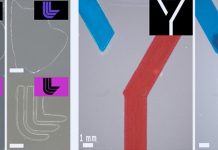
What if the fabrics of the future were made not from cotton or polyester, but from humble jute and paper yarn?
That question guided the research of Felicia Syrén, who recently completed her doctoral thesis at the Swedish School of Textiles, University of Borås.
Her work explored how renewable materials that are often overlooked can be given new life through innovative treatments, opening fresh opportunities for the textile industry.
Syrén’s research focused on two main materials: jute, a strong natural fiber commonly used in sacks and ropes, and paper yarn, which is literally spun from paper.
While both are renewable and abundant, they aren’t always easy to use in textiles because of their stiffness and limited flexibility.
To change this, Syrén combined microwave technology with chemical treatments to give the fibers new properties.
In her experiments, she treated jute with microwaves and then impregnated it with poly(vinyl alcohol).
The result was impressive: the treated jute could stretch much more than untreated fibers, making it more versatile for textile use. With paper yarn, she tested various chemicals already used in today’s textile production.
Silicone, for example, made the yarn easier to knit. Interestingly, wax—normally expected to reduce friction—actually increased it, an unexpected finding that points to new avenues for research.
These results are just the beginning. For instance, future studies could look at how different amounts of wax affect the behavior of yarn. Such knowledge could play a key role in scaling up the use of renewable fibers in textile production.
For Syrén, the bigger picture is about sustainability. The textile industry is growing rapidly, not just in fashion but also in technical applications such as medical textiles, construction materials, and protective fabrics.
To meet these demands in a responsible way, she believes society must tap into a wider range of renewable resources that are currently underutilized.
Her passion for textiles is personal as well as professional. Growing up with a mother who ran a sewing studio, she was surrounded by fabrics from an early age.
After years of studying and experimenting, she has now defended her thesis, A Sustainable Path to Increased Textile Materials Diversity: Treatments for Tailored Properties of Jute and Paper Yarn.
Although she is stepping away from academia for now to return to the steel industry, Syrén says she still loves research and may publish more of her results in the future. Looking back, she describes her doctoral journey as both tough and rewarding, filled with new friendships, insights, and discoveries.
Her work shows that even the simplest materials, like jute and paper, can help shape a more sustainable future for textiles.



